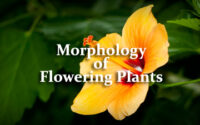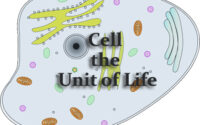Biodiversity and Conservation
1. When both flora and fauna are conserved at the same place without any type of human intervention the conservation area is called—
A. Biosphere Reserve
B. Wildlife Sanctuary
C. National Park
D. Zoological Parks
2. When is the biodiversity day celebrated?
A. 5th June
B. 1st July
C. 22nd May
D. 8th March
3. Troublesome American water weed found in India is—
A. Vallisneria
B. Eichhornia
C. Hydrilla
D. Lemna
4. The worst threat to wildlife is by—
A. habitat destruction
B. hunting
C. overgrazing
D. exotic species
5. Which of the following regions of our country are known for their rich biodiversity?
A. Western Ghats and Eastern Himalayas
B. Western Ghats and Deccan Plateau
C. Eastern Himalayas and Gangetic Plain
D. Trans Himalayas and Deccan Penninsula
6. Endangered plant species are conserve through-
A. herbarium
B. cryopreservation
C. gene bank
D. tissue culture
7. 17th biosphere reserve in India is—
A. Silent Valley
B. Seshachalam Hills
C. Aravalli Hills
D. Sarguja, Bastar
8. Pollen grain can be stored in a viable condition for many years in the following conditions—
A. Anaerobic condition in 0° C
B. Liquid nitrogen (—196° C)
C. Liquid nitrogen (0° C)
D. Liquid hydrogen (—196° C)
9. A fish, Nile Perch, introduced into lake Victoria in East-Africa led to extinction of child fishes in the lake. This is an example for
A. fragmentation
B. over exploitation
C. coexistance
D. Invasion of alien species
10. Which of the following statements is not true?
A. The biodiversity decreases with increasing latitude
B. The biodiversity decreases with increasing altitude
C. The fishes show greatest biodiversity among vertebrates
D. The biodiversity of bryophytes is greater than that of angiosperms.
11. A species facing extremely high risk of extinction in the immediate future is called—
A. Vulnerable
B. Endemic
C. critically endangered
D. extinct
12. The organisation which publishes the Red list of species-
A. ICFRE
B. IUCN
C. UNEP
D. WWF
13. The concept of Hotspots was first introduced by
A. Mayer
B. Simpson
C. Myers
D. David
14. Management of National Park is controlled by—
(i) State government
(ii) Central government
(iii) United Nations
(iv) Non-government organisations
A. (i)
B. (ii) & (iii)
C. (iv)
D. (i) & (ii)
15. The objective of ‘Ramsar Convention’ was—
A. forest conservation
B. wildlife conservation
C. wetland conservation
D. biodiversity conservation
16. Find the wrongly matched pair
A. Endemism — Species confined to one region and not found anywhere else
B. Hotspots —- Regions with species richness
C. Alien species to India — Clarias gariepinus
D. Insitu conservation —IVF
17. Which of the following statements is correct?
A. Species diversity, in general, increases from poles to the equator
B. Conventional taxonomic methods are equally suitable for higher plants and microorganisms
C. India’s share of global species diversity is about 18%
D. There are about 25000 known species of plants in India.
18. According to IUCN Red list, during the last two decades, the maximum increase in the number of threatened species is among
A. Amphibians
B. reptiles
C. birds
D. mammals
19. Which of the following is an example of alien species invading a new ecosystem resulting in biodiversity losses?
A. Introduction of Nile Perch into Lake Victoria in East Africa
B. Introduction of water hyacinth into India
C. Introduction of African catfish into Indian rivers
D. All of the above
20. Which of the following is the largest taxon among plants in terms of the number of species?
A. Algae
B. Mosses
C. Ferns
D. Fungi
21. One of the chief reasons among the following for the depletion in the number of species making it endangered is
A. over-hunting and poaching
B. greenhouse effect
C. competition and predation
D. habitat destruction
22. in IUCN Red List (2004) documents, the extinction of 784 species includes
A. 335 vertebrates, 360 invertebrates and 89 plants
B. 337 vertebrates, 362 invertebrates and 88 plants
C. 338 vertebrates, 359 invertebrates and 87 plants
D. 340 vertebrates, 357 invertebrates and 87 plants
23. Which one of the following is not used for exsitu plant conservation?
A. Shifting cultivation
B. Botanical gardens
C. Field gene banks
D. Seed banks
24. Which of the following is not an invasive species?
A. Parthenium hysterophorus
B. Ocimum sanctum
C. Lantana camara
D. Eichhornia crassipes
25. India is one of the twelve megadiversity countries with _________ of genetic resources of the world.
A. 12.1%
B. 18.1%
C. 38.1%
D. 8.1%
26. Among various categories of threatened species the percentage of angiosperms categorised as vulnerable is about
A. 14%
B. 19%
C. 41%
D. 51%
27. An ecologist uses the term biodiversity for the variety of species of
A. all living plants
B. all living animals
C. both (a) and (b)
D. (a), (b) and microbes also living in their natural habitats
28. Gir Lion Sanctuary Project was started in the year
A. 1976
B. 1972
C. 1962
D. 1952
29. Choose the right one which denotes genetic diversity.
A. Chromosomes —> Nucleotides —> Genes —> Individuals —> Populations
B. Populations —> Individuals —» Chromosomes —> Nucleotides —> Genes
C. Genes —> Nucleotides -» Chromosomes —> Individuals —> Populations
D. Nucleotides —» Genes —> Chromosomes —» Individuals —» Populations
30. Oran is a/an—
A. sacred grove
B. sacred landscape
C. sacred animal
D. endangered animal
31. Kokkarebellur Bird Sanctuary is located in—
A. Mandya
B. Mysore
C. Chamarajnagar
D. Hassan
32. Alexander Von Humbolt described for the first time :
A. Ecological Biodiversity
B. Laws of limiting factor
C. Species area relationships
D. Population Growth equation
33. Which of the following National Parks is home to the famous musk deer of hangul?
A. Keibul Lamjao National Park, Manipur
B. Bandhavgarh National Park, Madhya Pradesh
C. Eaglenest Wildlife Sanctuary, Arunachal Pradesh
D. Dachigram National Park, Jammu and Kashmir
34. How many hotspots of biodiversity in the world have been identified till date by Norman Myers?
A. 17
B. 25
C. 34
D. 43
35. Which of the following is correctly matched?
A. Aerenchyma — Opuntia
B. Age pyramid — Biome
C. Parthenium hysterophorus — Threat to biodiversity »
D. Stratification — Population
36. Red list contains data or information on
A. all economically important plants
B. plants whose products are in international trade
C. threatened species
D. marine vertebrates only
37. Which is the National Aquatic Animal of India?
A. Blue whale
B. Sea-horse
C. Gangefic shark
D. River dophin
38. Which of the following is the most important cause of animals and plants being driven to extinction?
A. Habitat loss and fragmentation
B. Co-extinctions
C. Over-exploitation
D. Alien species invasion
39. Joint Forest Management Concept was introduced in India during
A. 1980
B. 1990
C. 1960
D. 1970
40. One of the following statements is incorrect with reference to biodiversity. Identify it.
A. The areas with very few plant and animal species (low species richness) with no threatened species are called biodiversity hotspots.
B. Biodiversity increases from higher altitudes to lower altitudes.
C. Biodiversity decreases from the equator to polar regions.
D. Depletion in genetic diversity of crop plants is mainly due to the introduction of better varieties‘ with high yield, disease resistance, etc.
41. Which one of the following is not an conservation method?
A. National parks
B. Wild life sanctuary
C. Biosphere reserves
D. Zoological parks
42. One out of the following is not responsible for biodiversity loss
A. Alien species invasion
B. Co-extinction
C. Exsitu conservation
D. Deforestation
43. The species confined to a particular region and not found elsewhere is termed as
A. Endemic
B. Rare
C. Keystone
D. alien
44. Beta (B) diversity refers to diversity
A. within a community
B. between communities
C. between two ecozones
D. within a population
45. What is the full form of MAB?
A. Man And Biosphere
B. Man And Biosphere Reserve
C. Man And Biosphere Reserve Programme
D. Man And Biosphere Programme
46. Which one of the following in an insitu method of biodiversity conservation?
A. National park
B. Botanical garden
C. Zoological garden
D. Scientific laboratory
47. Wildlife Protection Act India was implemented in the year
A. 1982
B. 1988
C. 1972
D. 1970
48. An area is declared as ‘Hotspot’ when
A. it has 1500 or more endemic species and 75% of its original habitat is lost
B. it has 1500 or more vertebrate species and 75% of its original habitat is lost
C. it has more than 2000 species of plants
D. most of the species inhabiting the area is facing the risk of extinction.
49. The distribution or species diversity on earth may be best described as
A. it is uniformly distributed
B. it is highest in torpics
C. it is highest in polar regions
D. it is highest in Southern hemisphere and lowest in Northern hemisphere
50. Rajaji National Park is situated in
A. Tamil Nadu
B. Uttarakhand
C. Assam
D. Karnataka
51. Read the statements regarding a stable community and choose the correct option :
(I) Must be resistant to occasional disturbances
(II) Should show much variation in productivity from year to year
(III) Must be resistant to invasions by alien species
A. (i) and (ii) are correct
B. (i), (ii) and (iii) are correct
C. (i) only is correct
D. (i) and (iii) are correct
52. Find the wrongly matched pair :
A. Endemism — Species confined to a region and not found anywhere else
B. Hotspots — Western Ghats
C. Sacred groves — Jaintia hills of Rajasthan
D. Alien species to India — Water hyacinth
53. With respect to Eichhornia :
Statement X : It drains off oxygen from water and is seen growing in standing water.
Statement Y : It is an indigenous species of our country.
A. only statement X is correct and Y is wrong
B. both statements X and Y are correct
C. only statement Y is correct and X is wrong
D. both statements X and Y are wrong
54. Which of the following is not an exsitu conservation?
A. Cryopreservation
B. Seed bank
C. Biosphere reserves
D. Botanical garden
55. Species listed in Red list which presently have sufficient population but are facing the risk of extinction in medium term in future are called-
A. endangered species
B. vulnerable species
C. rare species
D. extinct species



